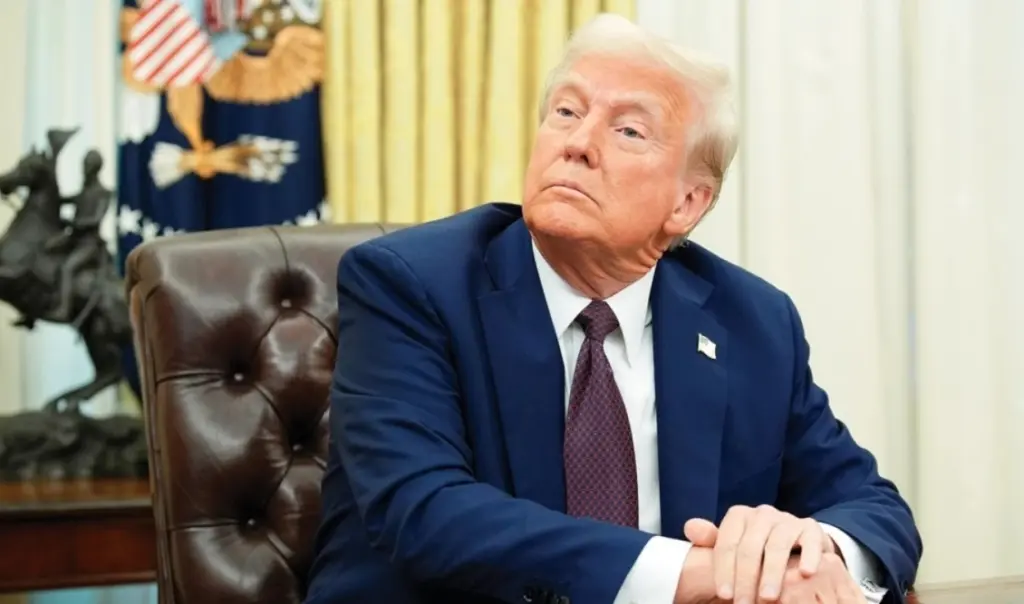An unprecedented trade war appears to have been launched by Donald Trump, following his announcements about imposing high tariffs on a series of countries that exceed – and indeed double – the traditional limit of 25% that was set at the beginning of his term.
Read: Trump tariffs: New trade order with historically high import taxes, what is expected
Specifically, with the modification of the list, an unprecedented global trade war in world history is escalating, as exhaustive tariffs target imports from dozens of US trading partners.
It should be noted that Trump’s unprecedented tariffs are set to take effect largely from Thursday (07/08), after extensive negotiations, deadlines, threats and modifications. The White House, aiming to redefine the trade order, has bet on this risky trade policy of the US president, which has caused turmoil in financial markets worldwide. Meanwhile, American citizens and businesses are also in a critical situation, as they are burdened with the cost of these tariffs when importing foreign products.
Trump: Tariffs on over 30 countries reaching up to 50%
It is recalled that Trump imposed tariffs of up to 50% on many countries, which caused concern in the international trade world and disrupted strong trade networks. After intense criticism for trade inequality and “inadequate” protection of American consumers and industries, Trump presented new tariffs on more than 30 countries. After months of negotiations, the countries affected include major trading powers such as China, Canada, Mexico, Brazil and India.
Specifically, China, which faces the highest tariff of 50% for specific products, and India, which has been added to the same category, are at the center of disputes. The reasons behind the increased tariffs include disappointment over poor management of fentanyl flow from China, as well as concerns about Russia’s growing influence in India. The president stated that imports from India would be burdened with an additional penalty for the country’s Russian oil imports, in addition to the 25% tariff that has been in effect since August 1st.
Laos and Myanmar, which focus on manufacturing, faced some of the highest tariffs of 40%.
For Taiwan, a key Washington ally in Asia, a 20% tariff will apply, which according to its president, Lai Ching-te, is “temporary” as talks with the US are still ongoing.
The EU, Britain, Japan and South Korea signed temporary agreements to avoid stricter tariffs, which provide for reductions in tariff rates and concessions in areas such as energy markets and investments in the US.
While the new tariffs are causing disruptions, there are countries that manage to achieve more favorable agreements. The European Union agreed to reduce tariff imposition on cars and pharmaceuticals to 15%, highlighting the importance of modernizing trade relations. Brazil, for example, has accepted additional punitive tariffs due to political differences and the treatment of former president Jair Bolsonaro. Some countries have not been targeted with specific new tariff threats. Instead, they are subject to a uniform 10% tariff on all imports to the United States, according to an executive order signed by Mr. Trump earlier this year.
Trump: Special tariffs on products that constitute “threats to national security”
The tariffs also target products that Mr. Trump considers essential for national security. Trump’s tariff policy has identified specific industries and products that are hit by special tariffs, mainly on the grounds that they constitute “threats to national security” or are of strategic importance to US industry.
These sectors include:
- Steel and Aluminum:
50% tariffs have been imposed on steel and aluminum imports. The reason is that domestic production of these metals is considered critical for national security, as they are used in strategic industries such as defense and construction. Countries affected are: Canada, China, European Union and other major exporting countries.
- Automobiles and Auto Parts:
Imports of cars and parts face tariffs of around 25%. The US imports almost half of the cars it consumes, and these tariffs were imposed to strengthen the domestic auto industry and reduce dependence on foreign manufacturers. Countries affected are: Germany, Japan, Korea and other countries with large automotive industries.
- Drugs and Pharmaceuticals:
The US depends heavily on drug imports, particularly from countries like China and India. In this case, the tariffs imposed are to strengthen domestic production and reduce dependence on external suppliers. Chinese pharmaceutical companies are particularly affected, as the US wants to reduce the flow of drugs from that country.
- Semiconductors
The semiconductor sector (used in electronic products, mobile phones and computers) is another strategically important industry. Tariffs have been imposed on semiconductors imported from countries like China and South Korea. Dependence on external suppliers is considered dangerous for the technological and strategic independence of the US.
- Photovoltaics and Polysilicon:
Tariffs and restrictions have been imposed on imports of photovoltaics and polysilicon, which are essential for solar energy production. China controls a large part of the market, and the US is trying to strengthen domestic solar panel production to reduce dependence on China.
- Aircraft and Satellites:
Tariffs also affect the aerospace sector. In this specific case, the US, which is the largest consumer of aircraft and satellites, is trying to protect national manufacturers from the competitive prices of other countries, such as the European Union and China.
- Minerals and Rare Earth Elements:
China controls global production of rare earth elements, which are essential for technology product manufacturing. The imposition of tariffs in this specific sector aims to strengthen domestic mining and production of these valuable resources.
- Agricultural Products (e.g. Lumber, Grains):
Tariffs are also imposed on agricultural products, such as lumber raw materials and grains, aiming to protect domestic agricultural production from cheap imports, particularly from Canada and other major exporting countries.
- Technology Products and Mobile Phones:
Tariffs are also imposed on high-tech products, such as mobile phones and computers. These products are imported mainly from China, and the US is trying to strengthen domestic production and research in the technology sector.
Trump’s policy has caused concern in global markets, as tariffs may increase prices of imported goods for American consumers and lead to economic disruption for businesses that depend on foreign products. According to estimates, the tariffs could provide over $2 trillion in revenue, but at significant cost to American companies. Trump’s trade strategy holds great uncertainties. The coming period will show whether threats of new tariffs will push countries toward greater concessions or, conversely, will strengthen economic tensions globally.
How Greece is affected
Greece, as an EU member, is affected by Trump’s general decisions regarding EU trade relations with the US. In this new policy, tariffs for EU countries have increased to 15% or more for most product categories, including cars and pharmaceuticals. This means that Greece, like other EU countries, faces increased costs for its exports to the US, which may affect Greek industries and trade relations. Greek exports to the American market will suffer from these new tariff increases.




